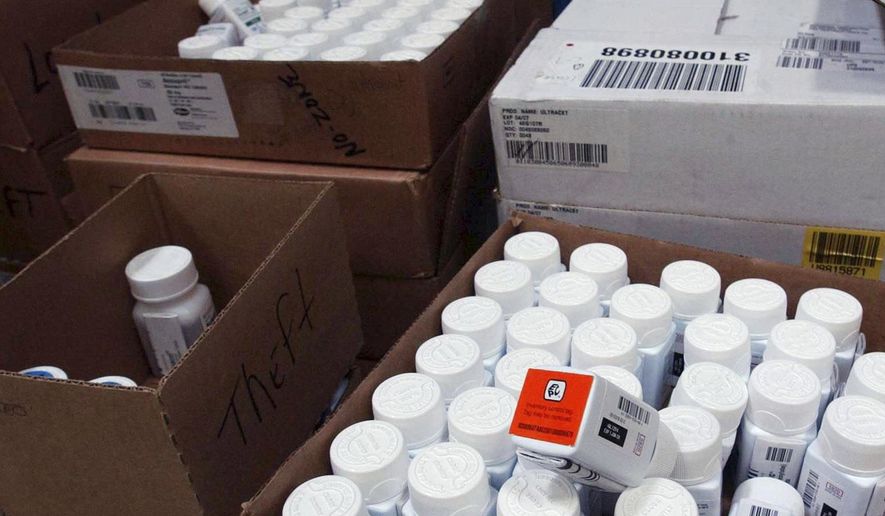Medicare recipients used fewer brand-name drugs but the program still saw its drug costs rise, according to a federal report Monday that says skyrocketing prices set by manufacturers are taking a toll on taxpayers and seniors.
Total reimbursements under Medicare’s drug benefit increased 77 percent, from $58 billion to $102 billion, even as prescriptions dropped by 17 percent from 2011 to 2015, the Health and Human Services Department’s inspector general said.
Unit costs for brand-name drugs rose six times faster than inflation, according to the report.
The investigation comes as Republicans and Democrats on Capitol Hill have questioned pricing decisions by major pharmaceutical companies, and as President Trump has vowed a pressure campaign to get manufacturers to voluntarily lower their prices.
Manufacturers argue the list prices for their drugs are often misleading, saying they have special programs and rebates in place for many customers.
But the investigation found even taking rebates into account, spending on name-brand drugs still rose by 62 percent over the four-year span.
Seniors also had to hand over more of their own money. Beneficiaries paid an average of $161 out-of-pocket for brand-name drugs in 2011, yet spent an average of $225 for those same drugs in 2015.
“We conclude that increases in unit prices for brand-name drugs resulted in Medicare and its beneficiaries’ paying more for these drugs,” the inspector general said.
Medicare didn’t cover prescription drugs until a new benefit, Medicare Part D, was added in 2003 by Congress and President George W. Bush. The Kaiser Family Foundation says as of 2017, more than 42 million Medicare beneficiaries were enrolled in Part D.
Taxpayers subsidize the plans, which are administered by private plans that negotiate better deals for beneficiaries.
The program’s costs were initially lower than projected as fewer name-brand drugs hit the market, but prices have since spiked.
While members of Congress have singled out companies for selling specialty drugs at eye-popping prices that can exceed $100,000, Monday’s report focused on “maintenance” drugs that address chronic conditions — things like insulin for diabetes or inhalers for asthma sufferers — over long periods.
If nothing is done, Part D beneficiaries are “likely to continue to be affected for years to come,” the inspector general said.
Mr. Trump has acknowledged that drug prices are too high. He released a multipoint plan to bring costs down and, at a recent bill signing, predicted companies will announce “voluntary, massive drops in prices” within weeks.
He didn’t provide specifics, leaving consumers to wait and see if he can reverse a trend that’s been festering for nearly two decades.
“What we’re seeing in the brand space is a rapid increase in prices, really from about 2000 to the current day,” said Gerard Anderson, a professor at the Bloomberg School of Public Health at Johns Hopkins University. “We are still seeing these rapid increases in prices, and there has been no ability of states, insurers or the American public to essentially be able to come up with an approach to control those prices.”
Though it’s not a new problem, the inspector’s report shows that “the government is very concerned about it, and is concerned about it with data,” Dr. Anderson said. “That’s the contribution.”
Mr. Trump’s heath secretary, Alex Azar, says list prices and out-of-pocket costs are, indeed, too high and that his agency is taking steps to bring them down. That includes strengthening negotiating powers to bring down the price of drugs in “protected classes” under Medicare Part D and preventing brand manufacturers from “gaming” the system by locking out generic competitors.
Mr. Azar also says pharmacy benefit managers (PBMs) who negotiate rebates from drug companies should get fixed discounts instead of a percentage of rebates on covered drugs, so PBMs don’t just pocket more money whenever list prices go up.
The administration resisted calls for more dramatic action, such as having the government directly negotiate down prices or allowing the importation of drugs from Canada, leaving Washington divided and experts wondering if federal stakeholders can deliver lower costs.
“I don’t see that we have a consensus on how to deal with these high-priced drugs,” Dr. Anderson said.
• Tom Howell Jr. can be reached at thowell@washingtontimes.com.




Please read our comment policy before commenting.